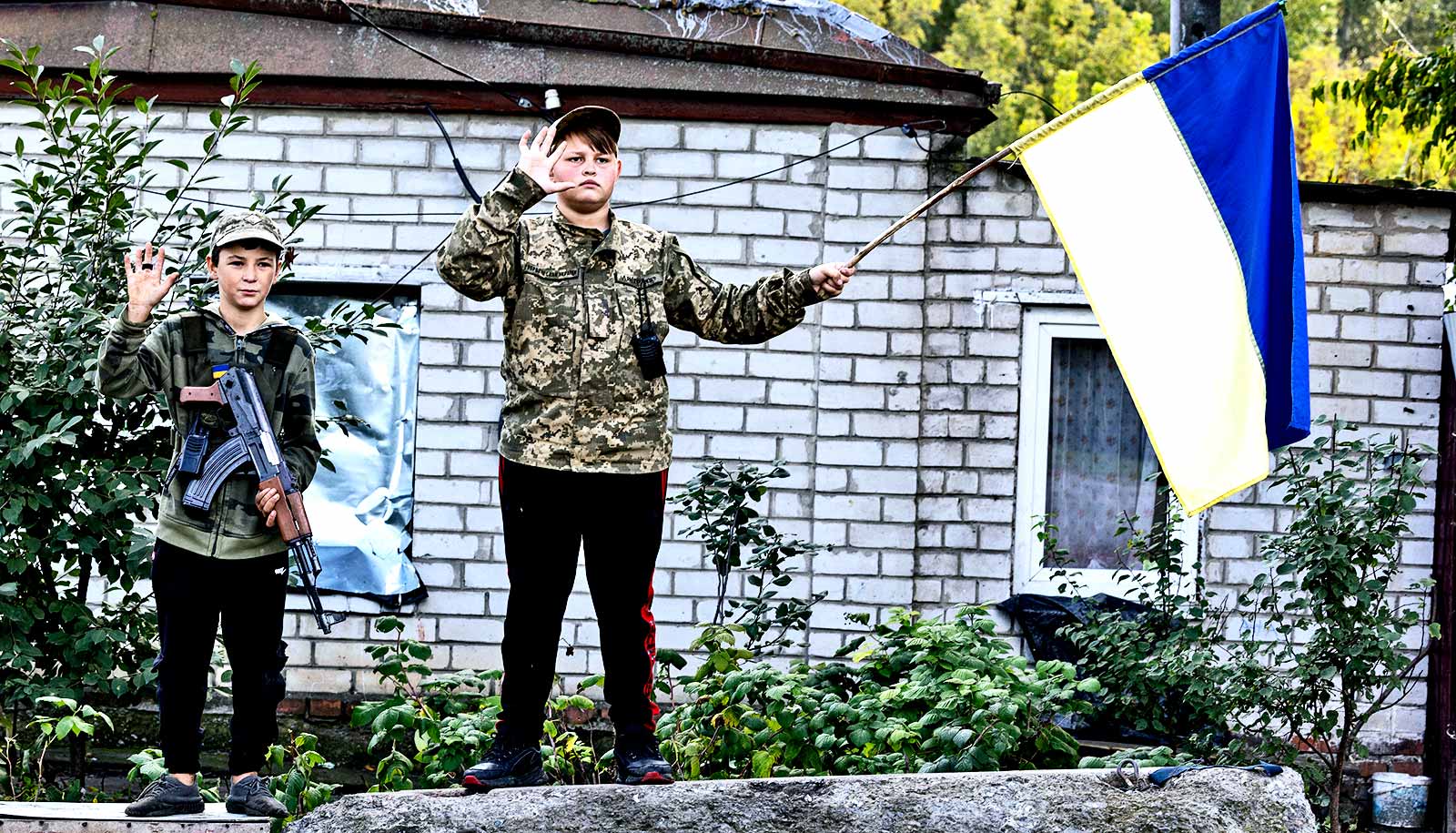After two years of fighting, the war in Ukraine is destroying the country’s cultural heritage on a scale not seen since World War II, according to a new study.
Ian Kuijt and William Donaruma from the University of Notre Dame visited Ukraine to see firsthand and begin to document the extent of the damage to cultural sites including churches, schools, opera houses, libraries, and archaeological sites.
Their report, the first ground-based survey of the region since the invasion, is published in the journal Antiquity.
“The intent by the Russians is essentially obliterating Ukrainian culture, heritage, and history,” says Kuijt, a professor in the anthropology department. “They have been targeting cultural features of society that have no military capability, no hardened infrastructures that would be used in defense. And there are many researchers who have started doing work with satellite and aerial photos, but at some point, you have to go into the field to truly get a sense of the damage.”
Kuijt and Donaruma, a professor of the practice in the film, television, and theatre department, visited liberated areas in Ukraine to assess, film, and document the cultural heritage destruction. Their interdisciplinary collaboration allowed Kuijt, an archaeologist, and Donaruma, a narrative and documentary filmmaker, to provide a more holistic view of the conditions in Ukraine’s built environment.
Walking through the ruins, Kuijt says, revealed more widespread and far more extensive damage than the team anticipated. They also found that the devastation not only exists above ground from missile strikes, but also extends below the surface due to the widespread trench systems used by military forces.
The researchers mapped out the substantial damage incurred by churches and historic buildings from as early as the 11th and 12th centuries. Architectural monuments and UNESCO-listed heritage sites—even those that have appeared fairly intact in satellite imagery—have also suffered.
“Beyond the destruction and damage, particularly in populated, civilian areas, we were astonished to see the amount of preparation and defense of cultural heritage sites and objects,” Donaruma says. “Large sheets of metal covered stained-glass windows. Fortified cages covered statues, and museums were boxing artifacts for storage.”
For every church the researchers found in similar condition, Kuijt estimates there are three to four other archaeological sites below ground that are also impacted.
Despite modern military advancements such as satellites, drones, and tanks, much of the war in Ukraine is reliant on trenches and bunkers—which has resulted in digging and tunneling through the ground, often underneath or right up to the foundations of crucial heritage sites.
This has likely destroyed thousands of archaeological spaces, Kuijt says, including medieval cemeteries and Bronze Age settlements.
This first hit home for Kuijt and Donaruma when visiting a previously unknown graveyard near St. George Chapel in Oster. There, team members discovered that the trench system had exposed the foundations of the 11th-century church and portions of the cemetery associated with it.
Further explorations revealed that other burial mounds and cemetery sites in the region have been affected by both missile strikes and underground trench systems, including one of the largest 11th-century necropolises in Ukraine.
The region has played a key role throughout human history, Kuijt says, as a crossroads of ancient people, culture, religion, language, and literature for thousands of years.
“Some of our best understanding of Paleolithic and Neolithic times was formed around the Black Sea,” he says. “This is where Bronze Age villagers created structures and villages that traded pottery with people from Turkey, Georgia, and other places.
“Vikings moved through and traded in these areas. The emergence of specific forms of Christianity occurred here, along with the construction of its churches—including ritual and religious life that is unique in this area. So, in many ways, this should be viewed as a global heritage.”
Because the war in Ukraine is ongoing, the researchers know that further destruction is likely, especially in the eastern and southern areas of the country where the most intense battles are currently happening. However, it is critical to begin assessing the damage now, even as it continues to occur, they say.
“There is very much a ticking clock,” Kuijt says. “This is essentially cultural triage. We need to assess which antiquities are the most important and the least damaged, and how we can allocate resources to try to protect those as best we can.”
While they anticipate that it may be five to 10 years before archaeologists will be able to truly sort out how much damage has taken place, Kuijt and Donaruma are hopeful their work will help to begin documenting all that the Ukrainian people have lost—and to prevent or minimize the ongoing devastation.
“Ian and I are both longing to return to Ukraine to continue our work with Ukrainian archeologists and students to keep the world apprised of the war and impact it has on lives and cultural heritage,” Donaruma says. “We have made so many friends in Ukraine in a short period of time that our passion to help and continue this work is of the utmost importance.”
Additional coauthors are from the Taras Shevchenko National University of Kyiv, the Institute of Archaeology at the National Academy of Sciences of Ukraine, the University of Wyoming, and Notre Dame.
Source: Notre Dame



